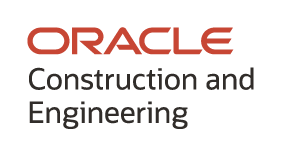A breakdown of how predictive AI functions in engineering and construction firms, from implementation to the insights you can expect it to surface.
Modern construction projects generate vast amounts of data that can be used to assess performance. However, this data often goes unused or just gets presented on an analytics dashboard that provides an overview of a project. Such tools can show why the project is behind schedule or over budget – providing ‘lagging’ (backward-looking) indicators to help you fix problems.
However, that same data can have another, less obvious use: improving project outcomes by offering insights about what is likely to happen in the future. When fed through artificial intelligence (AI) and machine learning, the data can yield dynamic ‘leading’ indicators that can tell you whether – and why – a project is likely to suffer delays, risks, or cost overruns. It can even improve projects before they start, assessing schedules and budgets against historical data to spot potential problem areas and improve accuracy.
“The simplest way to think about it is you’re using the data that you have to produce insights you don’t have,” says Karthik Venkatasubramanian, Oracle’s Global Vice President, Data Strategy and Development.
Oracle Construction and Engineering earlier this year launched Oracle Construction Intelligence Cloud Service (CIC) a predictive AI offering that is part of the Oracle Smart Construction Platform.
So what does it take to get predictive AI running in an engineering and construction context?
The right start
When it comes to creating and rolling out a data strategy, the worst thing you could do is act quickly.
“Something I see happen quite often is companies say, ‘We have a lot of data, let’s go hire some people.’ I think that’s a recipe for disaster because you don’t have any direction,” says Venkatasubramanian.
He suggests a basic four-step process for implementation.
- Make sure you have a culture that values data-driven decision making.
- Create a strategy that identifies specific problems you want to solve and decide.
- Use this strategy to inform a six to 18-month plan. This requires looking at your data, drawing up a landscape of all the systems you have, and figuring out what insights you want to come from that data.
- Execute the plan. Look for the solution that will deliver value in the shortest period.
Common mistakes
A reason many organisations baulk at implementing AI is the assumption that it requires a lot of infrastructure and the careful entry of huge amounts of historical data, but that’s not always true. Not every ‘big data problem’ requires all of your data, says Venkatasubramanian.
“With CIC, if you want to predict construction delays, the more historical data we can get from your completed projects the better the predictions will be. But we recently launched a new part of the platform that predicts litigation and health and safety issues that doesn’t need much historical data at all. We’ve already pre-trained an algorithm on publicly available data.”
Another mistake companies make is assuming predictive AI must necessarily come after they’ve implemented a high level of non-predictive analytics.
“If anything that’s counterintuitive because they’re not sequential problems,” says Venkatasubramanian. “If you get predictive AI right, your reports and dashboards will say something different. Because they show lagging indicators and not leading indicators.”
Finally, many organisations may regard predictive AI as daunting, assuming that it requires a long and complex implementation and specialised knowledge.
“The idea of a solution like Oracle CIC is that it reduces time to value – it does the heavy lifting and quickly starts generating useful insights into performance and risk,” says Venkatasubramanian.
Potential insights
Venkatasubramanian says that there are numerous insights predictive AI can provide for construction and engineering projects. He offers the following examples.
- Scheduling: You can improve scheduling accuracy, predict the probability and extent of delays, and which activities are most likely to cause them. Through machine learning, predictions will become more accurate with additional data, time and user feedback to help train the system.
- Cost: Similarly, budgeting can be made more accurate. You can layer in diverse information such as geographic location, subcontractor performance and change requests to get a more precise idea of costs.
- Risk: Predictive AI can provide an early warning system. For example, by using Construction Intelligence Cloud with the Oracle Aconex project information management system, you can even use natural language processing (NLP) and sentiment analysis across project correspondence to detect signs of conflict and the possibility of litigation.
- Quality and safety: NLP can also assist in alerting you to issues with a construction site by analysing everything from change requests and punch lists to correspondence and work orders. The most advanced sites can further improve this with the data coming from sensors and tools that are part of the Internet of Things.
Even if they understand the benefits, some people resist AI because they believe it can’t replace experienced human decision making. But Venkatasubramanian disagrees with that notion.
“I always say if intelligence matters, and it does, then you should embrace all forms of intelligence, human and machine. Because this is not a substitution, it’s an augmentation.”
To find out more about how Oracle’s Construction Intelligence Cloud and Smart Construction Platform can transform your projects for the better, click the links or reach out to us here.

